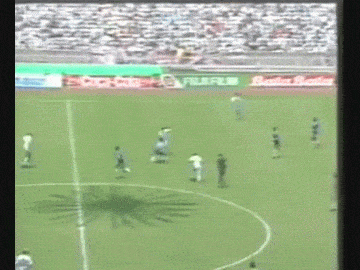Pele or Puskas? Maradona or Messi? Just who is the best No.10 of all-time?
After wearing 16 for the past four seasons, Sergio Aguero decided to slip into the No.10 shirt vacated by Edin Dzeko in the summer. Which got FourFourTwo thinking… who are the finest players to ever don the famous digits? And how does Kun compare to his former father-in-law?
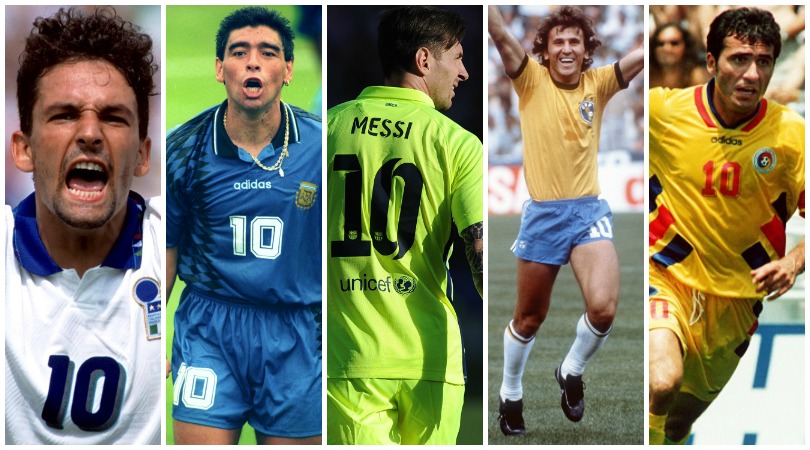
10) Enzo Francescoli
It’s perhaps no surprise that El Principe – or Le Prince when he later moved to France – felt most appreciated in Argentina, where the No.10 shirt enjoys near-mythical status.
After being rejected by Montevideo giants Penarol as a youngster, Francescoli made his name across the border, winning five league titles and a Copa Libertadores across three spells with River Plate. Having once turned down the opportunity to succeed Michel Platini at Juventus, Francescoli inspired another famous French 10 during a season with Marseille: Zinedine Zidane named his son Enzo after his idol.
Like Zizou, Francescoli was a two-footed playmaker who glided across the turf – the Uruguayan, though, was more prolific in front of goal, with a penchant for overhead kicks and dead balls. While the Uruguayan enjoyed mixed fortunes at two World Cups, he fared much better on his own continent, winning two Copa Americas abroad before coming out of international retirement to inspire his nation to victory in 1995.
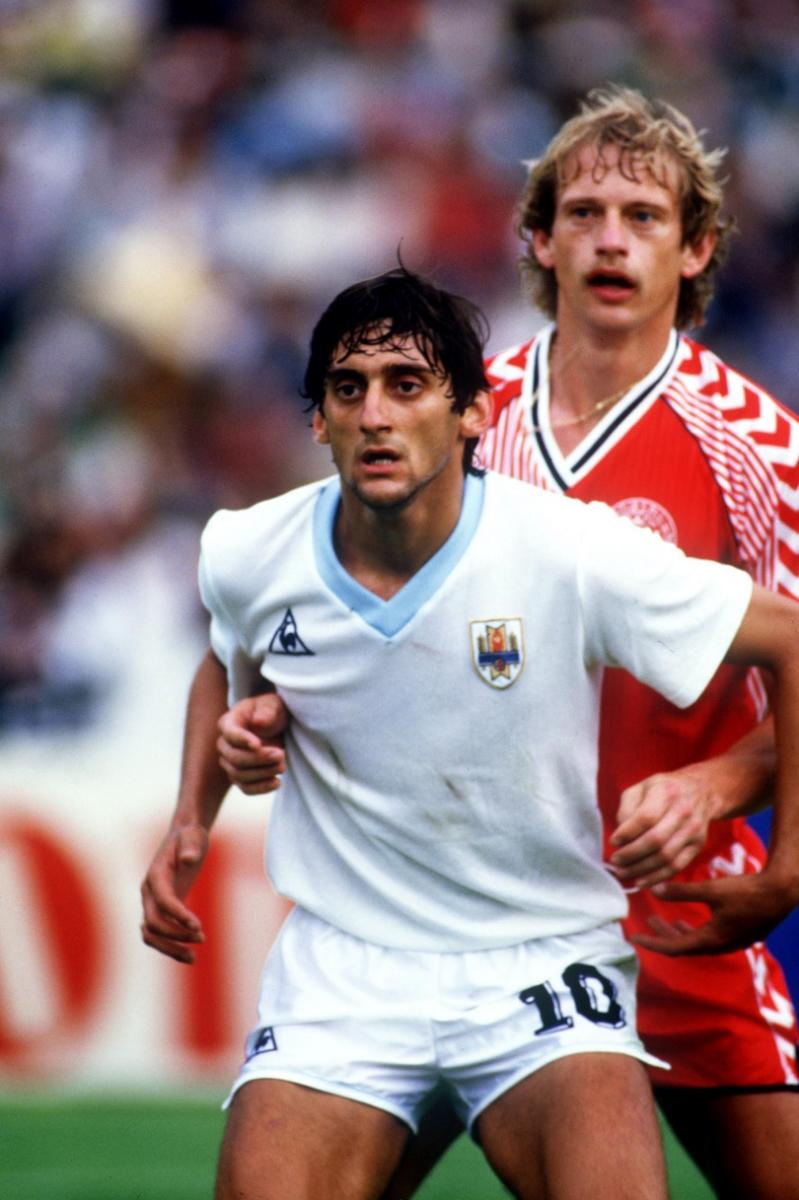
9) Michael Laudrup
Laudrup was an integral part of Johan Cruyff’s Dream Team at the Camp Nou, his no-look scoop passes to Romario becoming the stuff of legend
From Glenn Hoddle and Enzo Scifo to Ruud Gullit and Dennis Bergkamp: northern Europe has boasted some fine No.10s, but none as quintessentially stylish as the great Dane. Uniquely loved in Barcelona and Madrid despite crossing the great divide in 1994, Laudrup was an integral part of Johan Cruyff’s Dream Team at the Camp Nou, his no-look scoop passes to Romario becoming the stuff of legend, while Real coach Jorge Valdano perhaps summed up Laudrup best when he said: “He has eyes everywhere.” A decade earlier, he’d burst onto the international scene with a daring Denmark team, scoring a brilliant solo goal at Mexico ’86.
Regrettably, he was denied his greatest glories because of rows with managers: a fall-out with Richard Moller-Nielsen meant he was in international exile when Denmark won Euro 92, while a tiff with Cruyff led to his omission from the Barcelona squad for the 1994 Champions League final defeat of Milan.
Get FourFourTwo Newsletter
The best features, fun and footballing quizzes, straight to your inbox every week.
8) Lionel Messi
Messi might be the greatest footballer of all-time, but he’s never really been a No.10. Sure, he’s donned the shirt for Barcelona since 2008 – he wore 19 previously – when he inherited it from Ronaldinho, but the Flea’s starting position has rarely been behind the main striker – although he often ends up there, of course – moving from right wing to ‘false 9’ and back again. Inevitably compared to Diego Maradona for his combination of power, pace, dribbling ability, vision and left-footedness, it was El Diez himself who first handed Messi the Argentina No.10 shirt. He’s filled the iconic jersey with aplomb despite falling short of his superhuman efforts at club level, where’s he’s averaged better than a goal a game for the past six seasons.

7) Zico
The greatest player in perhaps the greatest team never to lift the World Cup, the performances of Arthur Antunes Coimbra in 1982 spawned millions of playground imitators up and down Britain, where Kenny Dalglish and Kevin Keegan suddenly seemed distinctly unsexy. A wisp of a child, Zico went on to become Flamengo’s greatest ever player after adding athleticism to his futsal-honed ability, even inspiring Brazilian singer Jorge Benjor to write a song in his honour – Camisa 10 da Gavea.
Zico was past his peak when he moved to Europe with unfashionable Udinese in 1983, but still managed to come a close second to Michel Platini in the Serie A goalscoring charts, despite playing fewer games. Having finished third with Brazil in 1978, Zico’s ability to score, create and generally dazzle with both feet came to the fore as the Selecao fell gloriously short four years later.
6) Gheorghe Hagi
Egotistical, irascible and nearly all left foot, Hagi was a prolific goalscorer for the great Steaua Bucharest side of the late-’80s
Nicknamed ‘the Maradona of the Carpathians’ and it’s easy to see why. Egotistical, irascible and nearly all left foot, Hagi was prolific for the great Steaua side of the late-’80s, belatedly heading east at the age of 25 when the Iron Curtain was lifted. Although he played for Real Madrid and Barcelona, the Romanian never quite thrived as just another big fish in those oh-so-big ponds, but did enjoy something of an Indian summer with Galatasaray, leading the Turks to the only European trophy in their history.
Like many great 10s of his generation, Hagi led through sheer force of personality as well as providing inspiration with his brilliance, never more so than at USA 94, where Romania reached the quarter-finals. Hagi scored three times, including a quite brilliant 40-yard lob against Colombia, which summed up his vision, ability and audacity in one swing of that famous left peg.
5) Michel Platini
Zinedine Zidane was a great footballer – but not, strictly speaking, a No.10, despite wearing the shirt with distinction for France (he wore 21 for Juventus, and 5 for Real Madrid). At his best, Zizou was a midfielder – an attacking one, granted, but one who could mix it, put in a shift and, well, you know what else he could do. Platini, on the other hand, saw fitness work as “a bit superficial”. But when you could create and score like the current FIFA presidential candidate, you didn’t need to run around all that much.
A two-footed technician who could pass, finish, dribble and dispatch free-kicks like they were tap-ins, for three years in the mid-’80s the Frenchman was simply untouchable for Juventus and France, winning individual and team gongs galore. “I was the best players in the world,” he admitted to FourFourTwo. “What else do you want me to say?” Modest too.
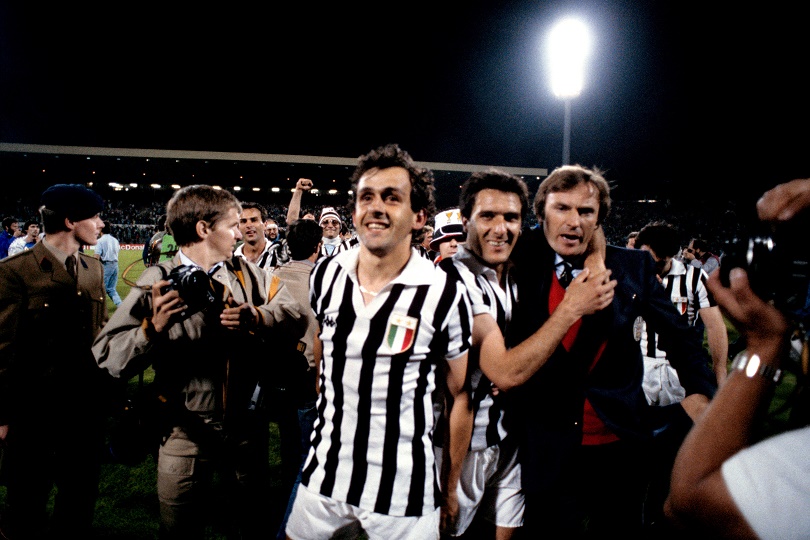
4) Roberto Baggio
Some players don’t care which shirt number they wear (Messi even offered Barca new boy Arda Turan his famous 10 this summer). Baggio wasn’t one of them. When ‘the Divine Ponytail’ joined Inter in 1998, even the great Ronaldo was happy to move into the No.9 jersey, so synonymous with 10 had Baggio become. Described as a “9 and a half” by Platini, Baggio was indeed a prolific scorer at times, but a classic Trequartista in his style of play. After announcing himself with a wonder goal at Italia 90 with 15 on his back, Baggio became the most loved Italian footballer ever, a rare free spirit in a tactics-obsessed world.
The heartbreaking penalty misses and crippling knee injuries only added to the allure. As well as having the No.10 shirt retired at Brescia, Baggio was even given an international send-off in a friendly against Spain in 2004 at the age of 37. Made captain by Giovanni Trapattoni, he was substituted to a standing ovation.
3) Pele
A couple of things you might not know about the most famous No.10 of all. Firstly, Pele only started wearing double digits at the 1958 World Cup, when FIFA officials randomly assigned shirt numbers to the Brazil squad after the country’s football federation had forgot. The 17-year-old, who missed the first two games through injury, did rather well on his return to the team; the rest, as they say, is history.
Pele only started wearing double digits at the 1958 World Cup, when FIFA officials randomly assigned shirt numbers to the Brazil squad after the country’s football federation had forgot
Which is interesting, because the second thing you might not realise about The King is that he wasn’t really a No.10 at all – but, as the stats suggests, a centre-forward, who just so happened to be able to pass, dribble and showboat as well as the very best playmakers. Even in his finest hour at the 1970 World Cup, Pele played ahead of Tostao and sandwiched in between Rivellino and Jairzinho, who incidentally also wore No.10 for their club sides.
2) Ferenc Puskas
Football’s first iconic No.10 played at a time when the role as it became known was still evolving. Shirt numbers themselves were a relatively new thing (first worn by Arsenal in 1928) and when football emerged from the ravages of World War Two, Puskas was the first player to make one his own. Like Pele, the Hungarian was a goal machine, his career stats – roughly a goal a game for club and country – made even more remarkable by the fact he played alongside other prolific scorers; Sandor Kocsis for Honved and Hungary, Alfredo di Stefano for Real Madrid. That he was short, round, and completely one footed didn’t matter (“you can only use one foot at a time,” he quipped). Near-perfect technique and game awareness would become classic No.10 traits – ones that allowed Puskas to transform the game as the pivotal player in the Magical Magyars’ early version of Total Football.
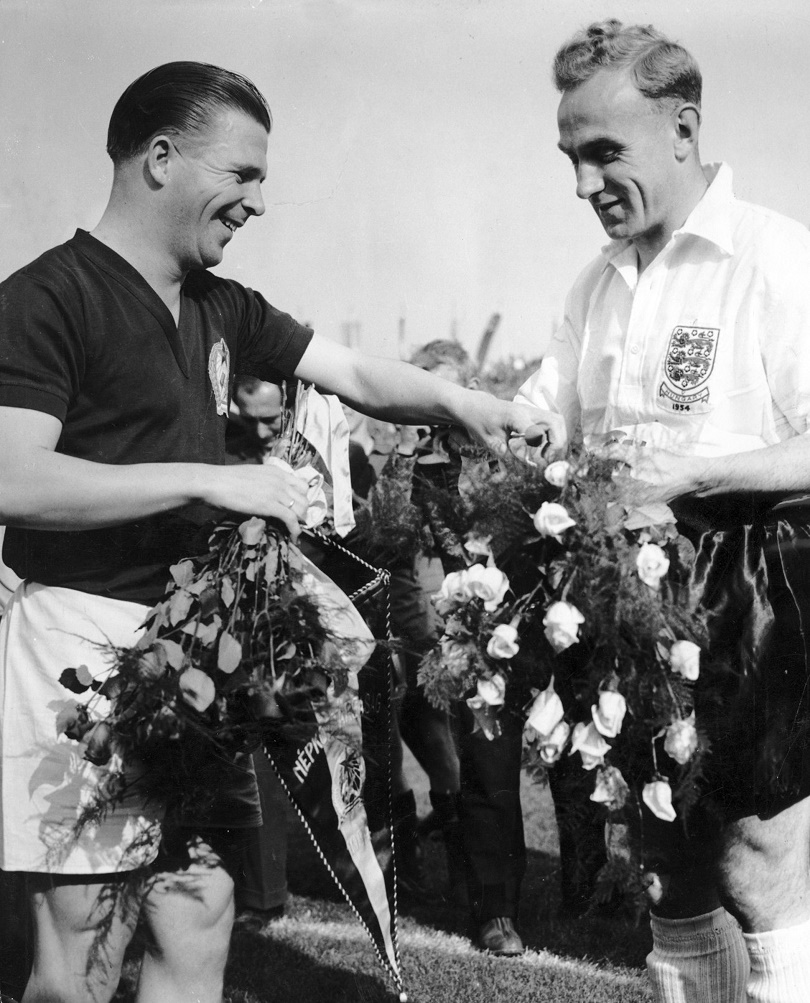
1) Diego Maradona

He didn’t score the most goals, didn’t win the most trophies and there’s as much to deplore as there is to admire, but that’s kind of the point when it comes to the artist known simply as El Diez (‘the 10’, silly). Even when Argentina were given squad numbers in alphabetical order for the 1982 World Cup – who can forget Ossie Ardiles wearing No.1? – an exception was made for Maradona. Then just 21, he was already a man apart. He was also the finest No.10 at a time when every decent team had one, a mercurial maniac who inspired average players to become good ones and turned mediocre teams into world-beaters. He spawned a raft of would-be successors in 10-obsessed Argentina – Ortega, Saviola and Riquelme. None, in truth, came close to matching Maradona until the arrival of Messi, who himself has redefined the role. Fitting.
